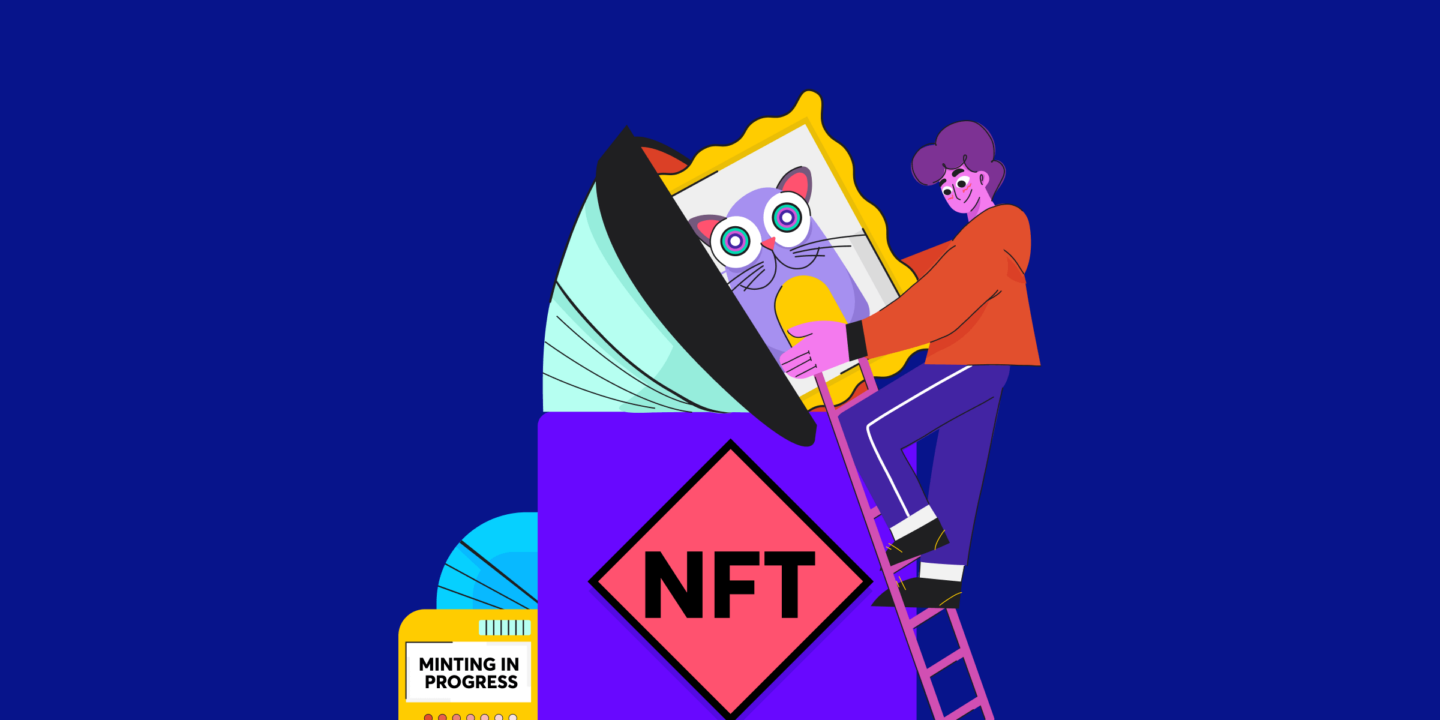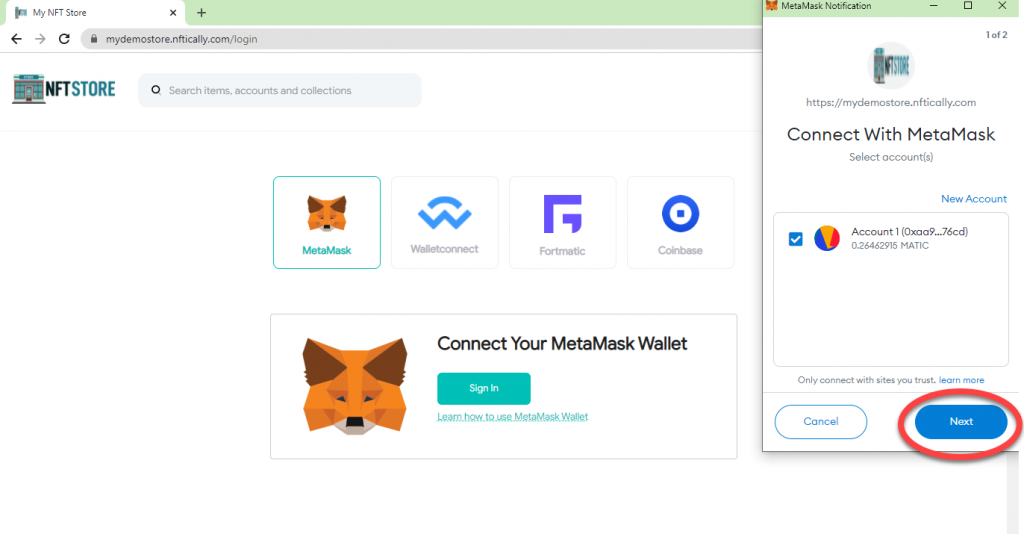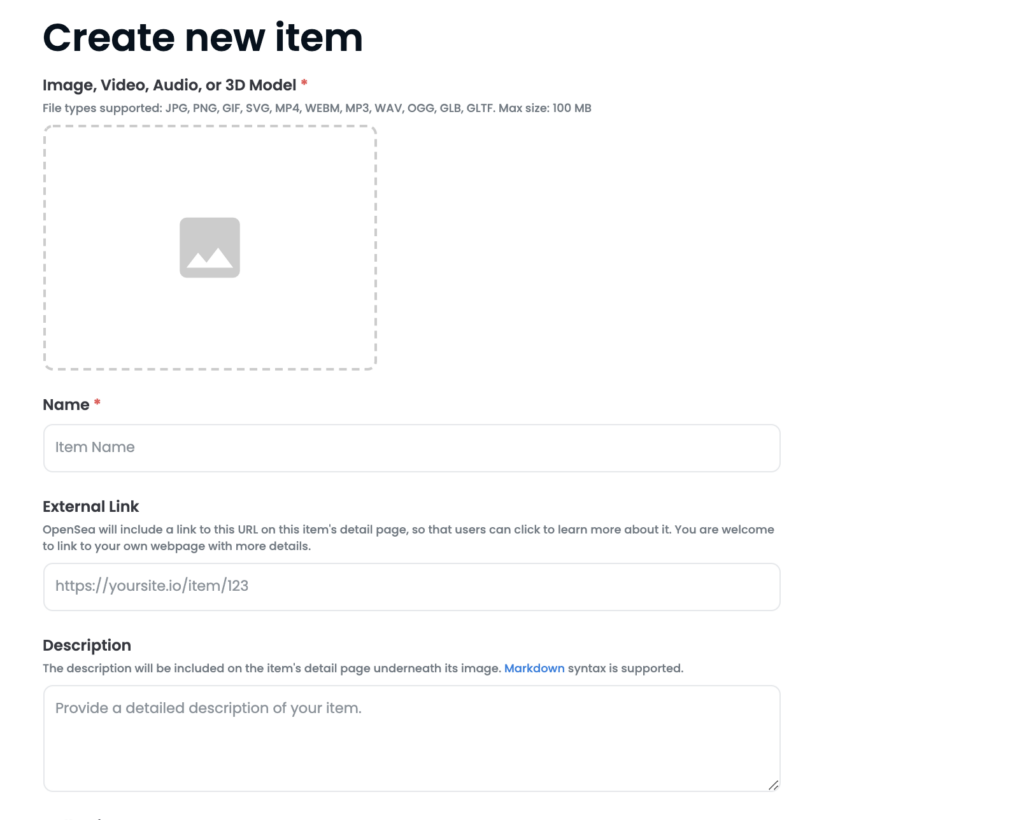
NFTs are all the rage in the crypto world right now, and for good reason. They are touted to be a turning point in how people own assets. But how are they created? Well, that is through a process called minting. Now, what is NFT minting?
Don’t worry; you will find out soon. However, before we talk about NFT minting, let’s first tell you what an NFT really is.
Tokens have existed on blockchains for a long time. So why’s everyone making a big deal of NFTs (Non-Fungible Tokens)?
Because of the “non-fungible” that comes before the “token.” What does this mean? Let’s take the example of Bitcoin to prove our point. Bitcoin is an excellent example of a fungible asset, meaning one BTC has the same value as any other BTC, so they can be mutually exchanged.
Non-fungible tokens, or NFTs, on the other hand, are unique tokens that are distinct from each other. No two NFTs are the same, and because they are one of a kind, they do not have any comparable equivalents. For example, the Mona Lisa painting is a non-fungible asset, although not a digital one. But you get the point. NFTs are a way to represent ownership of such unique collectibles on the blockchain. Thus each token is unique, just like the art it represents.
But how are these unique tokens created after all? Well, that’s the magic of ‘Minting.’
Minting is when you publish your NFT as a digital asset on the blockchain. Once this is done, your NFT is officially in circulation. Anyone can now buy it. Like everything else on the blockchain, smart contracts help in the buying and selling of NFTs too.
One question that keeps coming up is, “Is minting an NFT the same as buying it?”. Minting is the process of creating a digital asset from scratch. While buying an NFT is pretty much what it sounds like– you buy an NFT from any NFT marketplace in exchange for cryptos.
You could be learning NFT minting for various reasons; maybe you want to preserve a work of art you created digitally, or your sole purpose is selling or trading NFTs. Irrespective of the reason, before you get started on minting NFTs, you’ll need to make sure you understand the basics of blockchain technology. If you’ve got that covered, learning to mint NFTs can be pretty easy with the right tools.
Besides, you will need a crypto wallet and the required funds to create an NFT on the blockchain. Once you have that, simply upload the desired file and mint your brand-new NFT. You can then create your profile on an NFT marketplace, establishing what you’re selling and how exactly you plan to sell it.
Any digital content can be turned into an NFT. Digital content seems pretty vague; let’s break that down– anything from images to 3D models to videos to music to text files, be it a doc, PDF, or tweet, can be converted into an NFT. But how do you actually do it? Let’s take it step by step.
If you use Google Chrome, just download the Metamask extension– It is a crypto wallet; compatible with most blockchains and marketplaces. Once you have Metamask, transfer some Ether (ETH) to it. Ether because Ethereum is famous for NFT minting.

Next step is connecting your wallet to an NFT marketplace like OpenSea etc. Post which, your profile on that marketplace will be activated. From here, you can create an identity for yourself by adding your username, a cover picture for your NFT collection, and providing links to your social media.

On the NFT marketplace you’ve chosen, look for the “Create an NFT” button, which should let you convert the digital file of your choice into an NFT. Remember that this NFT is not the digital file itself; it represents the digital file on the blockchain.

Once you upload the digital file, you can give it a title and a description. After this is done, depending on the marketplace, you can either click on the “Mint NFT” or the “Is for sale” button. If it is for sale, it will get minted as soon as someone buys and publishes it.
Most NFTs get minted on the Ethereum blockchain, and to mint an NFT on the Ethereum network, there are certain transaction costs attached, called gas fees. These costs are paid for in ETH from your wallet. If you remember step 1, we’d asked you to add funds to your wallet. Well, now you know why.
One thing to remember is that gas fees are not fees that you pay to the NFT marketplace you’re using; it is the fee you pay for using the Ethereum blockchain.

All that’s left to do now is wait. Your NFT will get minted automatically. During this process, the Ethereum smart contract executes a code that will be implemented in your artwork on the Ethereum blockchain.
Here are a few benefits of minting NFTs:
An asset’s value can be preserved tangibly by minting an NFT of it. An additional benefit is that the blockchain’s security makes the digital preservation of assets highly secure.
The possibility of partial ownership of NFTs democratizes the digital assets space. Multiple individuals can own a stake in an NFT.
The creation of NFTs has redefined art and artists.
For instance, NFTs, besides being a piece of art, are also a way to foster community building, for example, Bored Ape Yacht Club. People owning Bored Ape Yacht Club NFTs are part of an exclusive community with access to private events, merchandise, and more.
The fact that it is so easy to mint an NFT also encourages smaller artists and unexplored art to see the light of day.
Now that we’ve seen the good, let’s see the bad as well. After all, transparency is a big part of the blockchain.
You’ll have to mint an NFT to bring it into circulation on the blockchain. And the most popular blockchain enabling minting is Ethereum, which charges creators gas fees to mint and these gas fees are almost never cheap.
It’s safe to assume that there are imitators on the internet looking to create cheap copies of popular NFTs. How many people have you seen put up the same Bored Ape NFT as their profile picture? Exactly! Though the copies always get caught, thanks to the immutability of blockchains, it could pose a threat to the uninitiated.
Not to mention the actors who create NFT projects with absolutely no intention to follow through on any of the promises mentioned in the whitepaper. Usually, their sole intention is to take the money and run. All these situations result in people seeing NFTs as a fad more than a promising piece of technology.
The NFT market is pretty new and, as a result, highly volatile. NFTs can triple in value in a matter of hours and lose all of it in minutes. Its highly unpredictable nature makes people remain cautious of NFTs.
Although NFT minting is easy, there are a few factors to consider before actually going through with it.
First, you need to decide which blockchain you’ll be minting your NFT on. Some of the popular ones include
The support offered on the blockchain for NFTs is a very important factor to consider when minting them. For example, you need to know if the blockchain supports transfers and sales of NFTs on other networks. Similarly, there are other features of an NFT ecosystem that you need to consider before minting on it.
Possibly the most important factor to consider when minting NFTs. Some of the most popular ones are OpenSea, Rarible, and BakerySwap. A marketplace is where you sell your NFTs.
As someone who’s probably just starting out, you may not want to put all your money into your first NFT. Two of the largest platforms for NFTs, Ethereum and Binance, lower the barrier of entry for creators significantly due to their sheer scale. What’s more? they also help you get the most exposure.
We’ve talked about how important it is to choose the right platform to mint your NFTs. Now, let’s take a look at some of the more popular ones that might suit your needs.
OpenSea is currently the largest marketplace for NFTs, so you’re guaranteed to find a huge range of NFTs from the ERC-721 and ERC-1155 standards.
OpenSea’s default wallet is Metamask, which makes buying, selling, and trading a hassle-free process. OpenSea even allows users to create NFTs right on the platform. As a seller, you can set a fixed price for your NFT or even auction them.
SuperRare’s ambition is to be the largest marketplace for buying and selling the rarest of the rare, 1/1 edition digital artworks– an appropriate name, wouldn’t you say? All transactions on SuperRare are done using Ether.
Foundation focuses on digital artwork. If you’re an artist who sold their work on Foundation and the buyer resells your art, you receive 10% of that transaction.
BakerySwap is powered by the Binance Smart Chain. It hosts digital art and online gaming items; NFTs are hot in the gaming space right now. If you’d like to know more about this trend, you might enjoy our article, where we explain all about gaming tokens.
BAKE tokens are used for transactions on the marketplace.
The cost of minting an NFT depends on the marketplace you decide to go with. There are a few marketplaces that allow you to mint for free but demand a percentage of the listing price. There are also a few that charge you if you want to transfer your NFT to a different marketplace.
One common cost of creating and minting an NFT is the on-chain costs. And a big part of the on-chain cost is the gas fees. What is a gas fee? These are the fees that you pay the blockchain network for facilitating transactions. They change from network to network, depending on demand. On the Ethereum network, gas fees fluctuate almost constantly, so we suggest you keep an eye on that number if you’re considering minting an NFT.
The laws that apply to fungible tokens like Bitcoin, Ethereum etc, are, for the most part, applicable to NFTs as well. The IRS (Internal Revenue Service) states that cryptocurrencies are property. By that logic, NFTs also qualify as property.
You might be interested to know that the IRS has not explicitly given any tax guidelines for NFT purchases and sales. Does this mean you can ignore paying taxes on your NFTs? Absolutely not. As a citizen, it is your responsibility to keep track of your NFT transactions and file them on your tax returns. How you are taxed will depend on if you are a buyer, seller, or trader.
As for India, the government has laid out some guidelines on crypto tax which applies to NFTs as well. You can read about them in our blog on crypto tax.
NFTs are a hot property right now, and everyone wants to jump on the bandwagon. Usually, minting does tend to be cheaper than buying NFTs on the secondary. And while we are all about investing in assets you believe in, we also strongly advocate that you DYOR– Do Your Own Research before jumping in.
If minting an NFT is not your thing, you can always invest in them through Mudrex’s NFT Coin Set. It invests in a range of NFT tokens that represent the best NFT platforms out there,
Minting is when one creates an NFT from scratch and publishes it on a marketplace. Buying, on the other hand, is when you buy an NFT that somebody else created. So, minting and buying aren’t exactly the same.
If you mint an NFT to sell on the marketplace, it is, of course, your property until someone decides to buy it, in which case a smart contract carries out the deal. Once the deal is done, the ownership is transferred.
Minting an NFT does require you to put some money upfront in the form of on-chain costs and the time and effort that you put in to create that piece of art. If, for whatever reason, you don’t get a buyer willing to pay even the break-even price, you might lose some money. However, if buyers could see the worth of your NFT, there are chances of you making money too.
Once you’ve created your NFT and minted it, it is in circulation on the marketplace. You can either list a price for your creation, or you can set up an auction for it. Either way, potential buyers who see your vision can buy your NFT, and a smart contract carries out the deal.
Minting is a part of mining. Mining involves verifying and recording transactions on the blockchain, as a result of which new tokens are minted and rewarded to miners as rewards. Minting refers to the act of new tokens coming into existence.